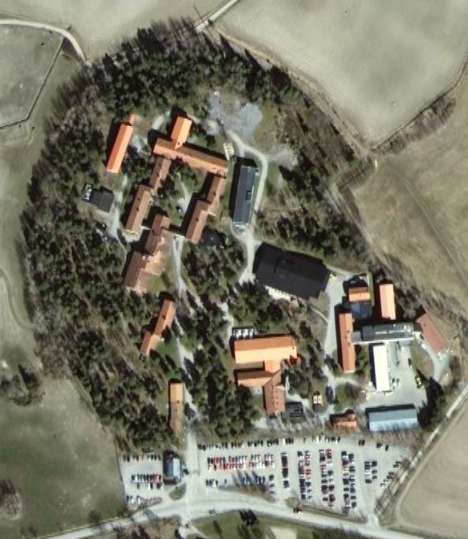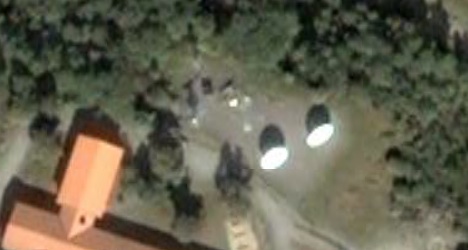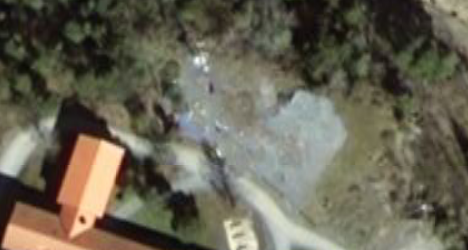Google Street View cars are apparently combing Stockholm, and when those images finally make it into Google Maps and Earth, I’m pretty sure that the Swedes won’t collectively betray anything more than amused curiosity. That’s a completely different reaction to the pockets of hysteria that greeted the advent of Street View in the UK, mainly among the gutter press and its readers. Why such a difference? Let’s think up some hypotheses.
Both in Sweden and in the UK, Google isn’t first to market with a street view product. Since October 2008, a UK company called Seety has made a proprietary street view dataset of London available on the web. Seety’s panoramic dataset is even more complete that Google’s for central London, as it contains images of plenty of mews and other small streets that Google Street View simply skipped. For example, check out Stanhope Mews East in South Kensington in Seety and in Google Street View. (Well, OK, you can’t in Street View.)
(The Mail Online used these holes in Google Street View coverage to concoct a conspiracy theory, of course.)
Meanwhile, in Sweden, the popular Swedish directory and mapping service Hitta.se has had a street view beta available for Stockholm since December 2008, based on MapJack‘s technology.
One difference between Hitta.se and Seety is that Hitta.se is a well known service in Sweden, and its introduction of street view images received widespread positive coverage in the local media, perhaps even with a frisson of glee that a local hero had beaten Google to market with something. When Google’s own imagery arrives, Swedes will see it as a catch-up maneuver; to then also worry about privacy all of a sudden would simply be too obviously hypocritical. Seety, meanwhile, doesn’t enjoy nearly the same level of mindshare in the UK. Most Londoners did not know that street view imagery of them and their homes had already been on the web for six months when Google Street View arrived.
Also: Technology journalism is mainstream journalism in Sweden. Swedes are among the most tech-savvy people in the world — bittorrent is no mystery to most of them — and many newspapers have a daily technology section. The tech news agenda in Sweden is not driven by scientifically illiterate hacks at places like The Sun. In the UK, it sometimes is.
Another difference is cultural. The compromise between transparency and privacy is drawn differently in these two countries. Swedes tend to live transparently: Home windows are rarely curtained, with little expectation that others will stop to peer in. Everyone’s tax return information is in the public domain, but most people aren’t that curious about their neighbors. A law called Allemansrätt (the right of public access) gives everyone the right to roam through private property, for personal recreation. (In the UK, the property rights of landowners are far more sacrosanct.) Swedes are conscious of these traditions, and generally prefer an open, transparent society for the benefits they feel it brings them.
It is also possible that the British, on the whole, have not in fact been in an uproar at the release of Google Street View — just British journalists, some privacy extremists, and the burghers of Broughton village. The journalists and Broughton’s villagers fulminated about how burglars would have a field day; the privacy advocates about how 360-panoramic photos of public places often incidentally contain people in them — something which British legal precedent maintains is not an invasion of privacy (reports the BBC).
According to Google, takedown requests for Street View imagery on the first day were “less than expected” (reports the Guardian). Nevertheless, Google in the end felt a potential PR crisis had to be contained, and so brought out the big guns — not just Google Geo head John Hanke, but even Google CEO Eric Schmidt, to state the company’s case.
Meanwhile, Microsoft is taking a different tack in producing a competitor to Street View — they’ll be crowdsourcing the acquisition of photos, leaving it to us to take them, and then sorting the uploaded pics spatially via their Photosynth technology. In this model, there is no systematic coverage program à la Street View, which is a technology new to most people and which reminds some of the panopticon or 1984’s big brother; taking snapshots, however, is something we’ve all done, and such familiarity is unlikely to create a backlash for Microsoft’s plan. The main question is whether crowdsourcing will produce enough usable images: Google tried to crowdsource its 3D buildings layer by making SketchUp free, but Microsoft’s own program of systematic 3D city data acquisition so outpaced Google’s that Google soon adopted Microsoft’s methods.



